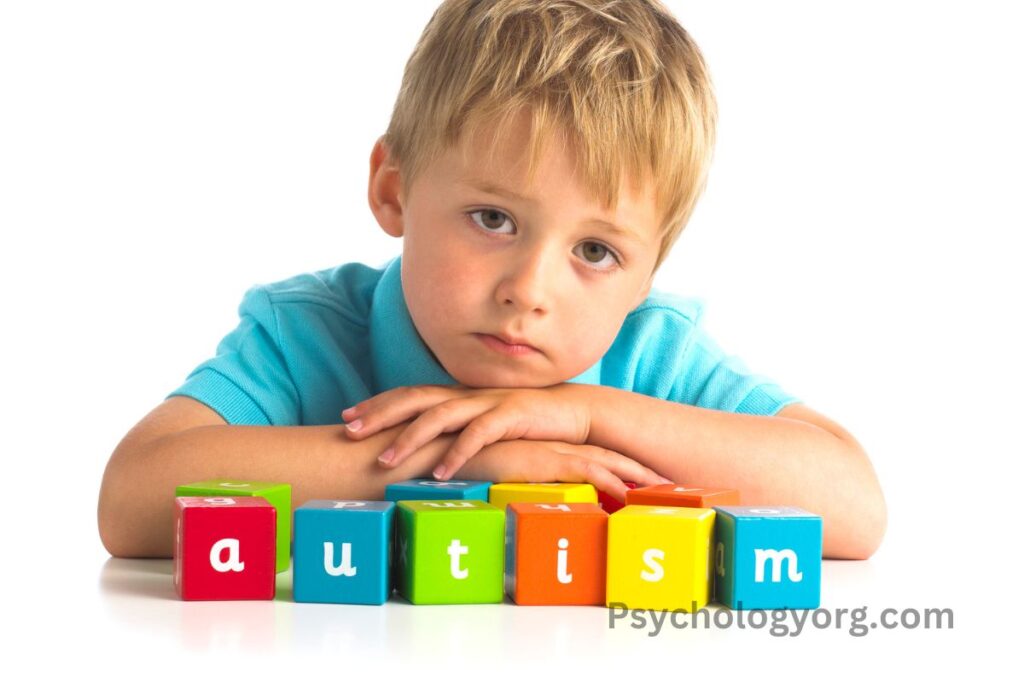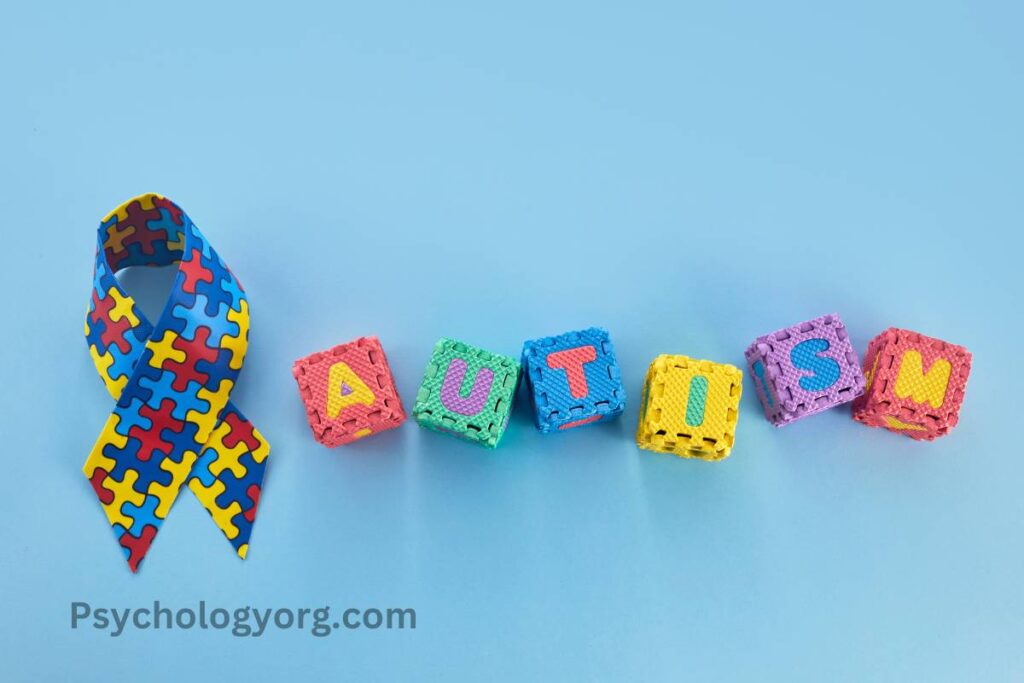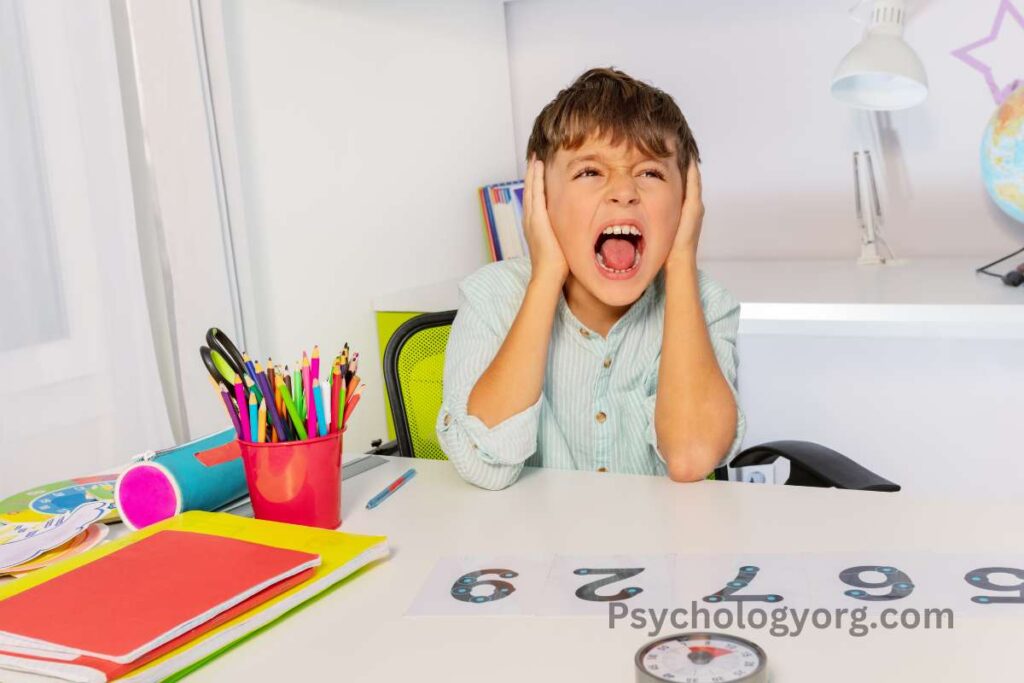Autism spectrum disorder (ASD) is a complex developmental disorder that affects a person’s ability to communicate, interact with others, and behave appropriately. Symptoms of autism can vary from mild to extreme and can vary from person to person. ASD can be diagnosed at any age but is usually identified in early childhood.
Table of Contents
- What is Autism Spectrum Disorder?
- What are the Signs and Symptoms of ASD?
- Different Types of Autism
- Common Behaviors and Symptoms of Autism
- Diagnosis of Autism Spectrum Disorder
- What Causes Autism Spectrum Disorder?
- How Can You Support a Child with ASD?
- Treatment of Autism Spectrum Disorder
- FAQs
- Q: What is Autism Spectrum Disorder?
- Q: What are some common signs and symptoms of ASD?
- Q: How is ASD diagnosed?
- Q: Is there a cure for ASD?
- Q: What are some effective treatments for ASD?
- Q: Can ASD be prevented?
- Q: How can family members and caregivers support individuals with ASD?
- Q: What is the outlook for individuals with ASD?
- FAQs

What is Autism Spectrum Disorder?
Autism Spectrum Disorder is a neurodevelopmental disorder that affects communication, social interaction, and behavior. The disorder is called a spectrum because the severity and symptoms can vary widely from person to person. Some individuals with ASD may have difficulty with social interactions, while others may have trouble with communication or repetitive behaviors.
What are the Signs and Symptoms of ASD?
The signs and symptoms of Autism Spectrum Disorder can be recognized in early childhood, typically around 2-3 years of age. However, in some cases, signs may not be evident until later. Some common indications and symptoms of ASD contain:
- Delayed speech and language development
- Difficulty with social interactions
- Repetitive behaviors or rituals
- Sensory processing difficulties
- Narrow or intense interests
- Difficulty with transitions or changes in routine
- Lack of eye contact or facial expressions
- Unusual body movements, such as flapping or rocking
Different Types of Autism
There are different types of Autism that are diagnosed based on the severity of symptoms and the age of onset. These include:
- Classic Autism: Also known as Autistic Disorder, this is the most severe form of Autism. Children with Classic Autism have significant delays in social interaction and communication, as well as repetitive behaviors.
- Asperger Syndrome: This is a milder form of Autism where individuals have normal to above-average intelligence but struggle with social interactions and communication. They may have difficulty understanding social cues, sarcasm, or idioms.
- Pervasive Developmental Disorder – Not Otherwise Specified (PDD-NOS): This is a catch-all diagnosis for individuals who have some symptoms of Autism but do not meet the full criteria for Classic Autism or Asperger Syndrome.
- Rett Syndrome: This is a rare genetic disorder that primarily affects females. It is characterized by intellectual disability, seizures, and repetitive hand movements.
- Childhood Disintegrative Disorder (CDD): This is a rare form of Autism where children develop normally for the first few years of life and then experience a significant loss of skills in language, social interaction, and behavior.
Common Behaviors and Symptoms of Autism
The indications and symptoms of Autism can differ widely from person to person. However, there are some common behaviors and symptoms that individuals with Autism may display. These include:
- Social Difficulties: Individuals with Autism may have difficulty with social interactions. They may avoid eye contact, not respond to their name, or have difficulty understanding social cues.
- Communication Difficulties: Many individuals with Autism have difficulty with communication. They may have delayed speech, struggle with nonverbal communication, or have trouble initiating or maintaining conversations.
- Repetitive Behaviors: Repetitive behaviors, such as hand-flapping, spinning objects, or lining up toys, are common in individuals with Autism. These behaviors may provide comfort or be a way of self-regulation.
- Sensory Processing Difficulties: Individuals with Autism may have difficulty processing sensory information. They may be over-responsive to certain sensory stimuli, such as loud noises or bright lights, or under-responsive to others, such as pain.
- Narrow Interests: Many individuals with Autism have narrow or intense interests. They may become obsessed with a particular topic, such as trains or dinosaurs, and have difficulty engaging in other activities.

Diagnosis of Autism Spectrum Disorder
Autism Spectrum Disorder (ASD) is a neurodevelopmental disorder that affects communication, social interaction, and behavior. ASD is a spectrum disorder, which means that individuals with ASD can have a wide range of symptoms and abilities. Because of this, diagnosing ASD can be challenging, and it requires careful evaluation by a qualified professional.
The Diagnostic and Statistical Manual of Mental Disorders (DSM-5)
The DSM-5 is the manual used by mental health professionals to diagnose mental health disorders, including ASD. According to the DSM-5, individuals with ASD must have persistent deficits in social communication and interaction, as well as restricted and repetitive patterns of behavior, interests, or activities.
To receive a diagnosis of ASD, an individual must exhibit symptoms in both of these domains. Additionally, the symptoms must be present in early childhood, although they may not become fully apparent until later in life.
Screening for Autism Spectrum Disorder
Early detection of ASD is critical to ensure that children receive appropriate interventions and support. Screening for ASD typically involves the use of standardized questionnaires or checklists that are completed by parents or caregivers. These tools are designed to identify children who may be at risk for ASD and who require further evaluation.
If a child is identified as being at risk for ASD, they will typically be referred for further evaluation. This evaluation may include a comprehensive diagnostic assessment by a qualified professional.
Comprehensive Diagnostic Assessment
A comprehensive diagnostic assessment for ASD typically involves multiple components, including:
- A thorough developmental history, including information about the child’s milestones and behavior
- A physical examination to rule out any medical conditions that may be contributing to the child’s symptoms
- Direct observation of the child’s behavior and interactions with others
- Standardized assessments of cognitive and language abilities
- Assessment of social communication skills and play behaviors
- Assessment of adaptive behavior and daily living skills
The evaluation may also include input from the child’s parents or caregivers, teachers, and other professionals who work with the child.
Differential Diagnosis
One of the challenges of diagnosing ASD is that many of the symptoms of ASD can also be present in other conditions. For example, language delays and social difficulties can also be present in children with intellectual disabilities or language disorders.
To make an accurate diagnosis, it is important to rule out other conditions that may be contributing to the child’s symptoms. This may involve additional assessments or referrals to specialists such as neurologists, audiologists, or speech-language pathologists.

What Causes Autism Spectrum Disorder?
The exact cause of Autism Spectrum Disorder is not known, but research suggests that a combination of genetic and environmental factors may be involved. Studies have shown that certain genes may increase the risk of developing ASD, and prenatal exposure to certain toxins or infections may also play a role.
How Can You Support a Child with ASD?
If your child has been diagnosed with Autism Spectrum Disorder, there are many things you can do to support them. Here are some techniques that may be useful:
- Early intervention: Early intervention is critical for children with ASD. The earlier a child receives therapy, the better the outcomes may be. Therapy may include speech-language therapy, occupational therapy, and applied behavior analysis (ABA).
- Create a routine: Children with ASD thrive on routine and predictability. Creating a predictable schedule and sticking to it can help your child feel more secure.
- Use visual aids: Many children with ASD have difficulty with language processing. Using visual aids, such as picture schedules or social stories, can help your child understand expectations and routines.
- Provide sensory input: Many children with ASD have sensory processing difficulties. Providing sensory input, such as weighted blankets or fidget toys, can help your child feel more regulated.
- Encourage socialization: Children with ASD may have difficulty with social interactions, but it is important to encourage socialization. Encourage your child to participate in social activities and provide opportunities for play dates or social groups.
- Practice self-care: Caring for a child with ASD can be challenging, so it is important to take care of yourself. Make time for self-care activities, such as exercise or meditation, and seek support from friends, family, or a therapist.
Treatment of Autism Spectrum Disorder
Autism Spectrum Disorder (ASD) is a lifelong condition, and there is currently no cure for it. However, early intervention and treatment can greatly improve the lives of individuals with ASD. Treatment plans are usually tailored to the individual’s specific needs and can involve a combination of therapies, medication, and support.
- Behavioral and Developmental Therapies Behavioral and developmental therapies are the cornerstone of treatment for ASD. These therapies aim to improve communication skills, social interactions, and adaptive behaviors. Some common types of therapies include:
- Applied Behavior Analysis (ABA): ABA is a highly structured therapy that uses positive reinforcement to teach new skills and behaviors. It concentrates on breaking down difficult skills into smaller, more manageable phases.
- Speech Therapy: Speech therapy helps individuals with ASD improve their communication skills, including verbal and nonverbal communication.
- Occupational Therapy: Occupational therapy helps individuals with ASD improve their fine motor skills, sensory integration, and daily living skills.
- Medications There are no medications that can cure ASD, but medications can help manage some of the symptoms associated with the condition. Some ordinary medications used to treat ASD include:
- Antipsychotic Medications: Antipsychotic medications can be used to manage irritability, aggression, and other behavioral issues.
- Stimulant Medications: Stimulant medications can be used to manage hyperactivity and attention issues.
- Selective Serotonin Reuptake Inhibitors (SSRIs): SSRIs can be used to manage anxiety and depression.
It’s important to note that medication should always be prescribed and monitored by a qualified healthcare professional.
- Supportive Therapies Supportive therapies can help individuals with ASD and their families cope with the challenges of the condition. Some examples of supportive therapies include:
- Parent Training and Support: Parent training and support can help parents learn how to better support their child with ASD and manage any challenging behaviors.
- Social Skills Groups: Social skills groups can help individuals with ASD improve their social interactions and make friends.
- Support Groups: Support groups can provide individuals with ASD and their families with a sense of community and support.
- Alternative Therapies There are many alternative therapies that are often marketed as treatments for ASD, but there is little scientific evidence to support their effectiveness. Some examples of alternative therapies include:
- Chelation Therapy: Chelation therapy is a treatment that involves the removal of heavy metals from the body. It has been promoted as a treatment for ASD, but there is no scientific evidence to support its effectiveness, and it can be dangerous.
- Hyperbaric Oxygen Therapy: Hyperbaric oxygen therapy concerns breathing pure oxygen in a pressurized compartment. It has been promoted as a treatment for ASD, but there is no scientific evidence to support its effectiveness.
- Gluten-Free and Casein-Free Diet: Some individuals with ASD have reported improvement in their symptoms when following a gluten-free and casein-free diet. However, there is little scientific evidence to support the effectiveness of this diet for all individuals with ASD.
It’s important to talk to a qualified healthcare professional before trying any alternative therapies.
In conclusion, ASD is a complex condition that requires a multifaceted treatment approach. With early intervention and a combination of therapies, medications, and support, individuals with ASD can improve their communication skills, social interactions, and adaptive behaviors. It’s important to work with a qualified healthcare professional to develop a treatment plan that is tailored to the individual’s specific needs.
This article is simply for information, at Psychologyorg we do not have the power to make a diagnosis or recommend a treatment. We request you to go to a psychologist to treat your certain case.
FAQs
Q: What is Autism Spectrum Disorder?
Autism Spectrum Disorder (ASD) is a neurodevelopmental disorder that affects communication, social interaction, and behavior.
Q: What are some common signs and symptoms of ASD?
A: Common signs and symptoms of ASD include difficulty with social interaction and communication, repetitive behaviors or routines, sensory sensitivities, and difficulty with transitions or changes in routine.
Q: How is ASD diagnosed?
A: ASD is typically diagnosed through a combination of developmental and behavioral evaluations, along with standardized assessments and observations. It is important to have a comprehensive evaluation performed by a qualified healthcare professional.
Q: Is there a cure for ASD?
A: Currently, there is no cure for ASD, but there are a variety of treatments and therapies available to help manage symptoms and improve quality of life.
Q: What are some effective treatments for ASD?
A: Effective treatments for ASD may include behavioral and developmental therapies, medication management, and alternative therapies such as dietary interventions and sensory integration therapy.
Q: Can ASD be prevented?
A: Currently, there is no known way to prevent ASD. However, early intervention and treatment can greatly improve outcomes and quality of life for individuals with ASD.
Q: How can family members and caregivers support individuals with ASD?
A: Family members and caregivers can support individuals with ASD by educating themselves about the disorder, advocating for appropriate services and therapies, providing a structured and supportive environment, and promoting socialization and positive interactions with others.
Q: What is the outlook for individuals with ASD?
A: The outlook for individuals with ASD can vary greatly depending on the severity of symptoms, access to treatment and therapies, and individual factors such as temperament and resilience. However, with appropriate support and interventions, individuals with ASD can lead fulfilling and meaningful lives.
If you want to read more articles similar to Autism Spectrum Disorder (ASD) Symptoms and causes, we recommend that you enter our Mental Disorders category.
Read Also: